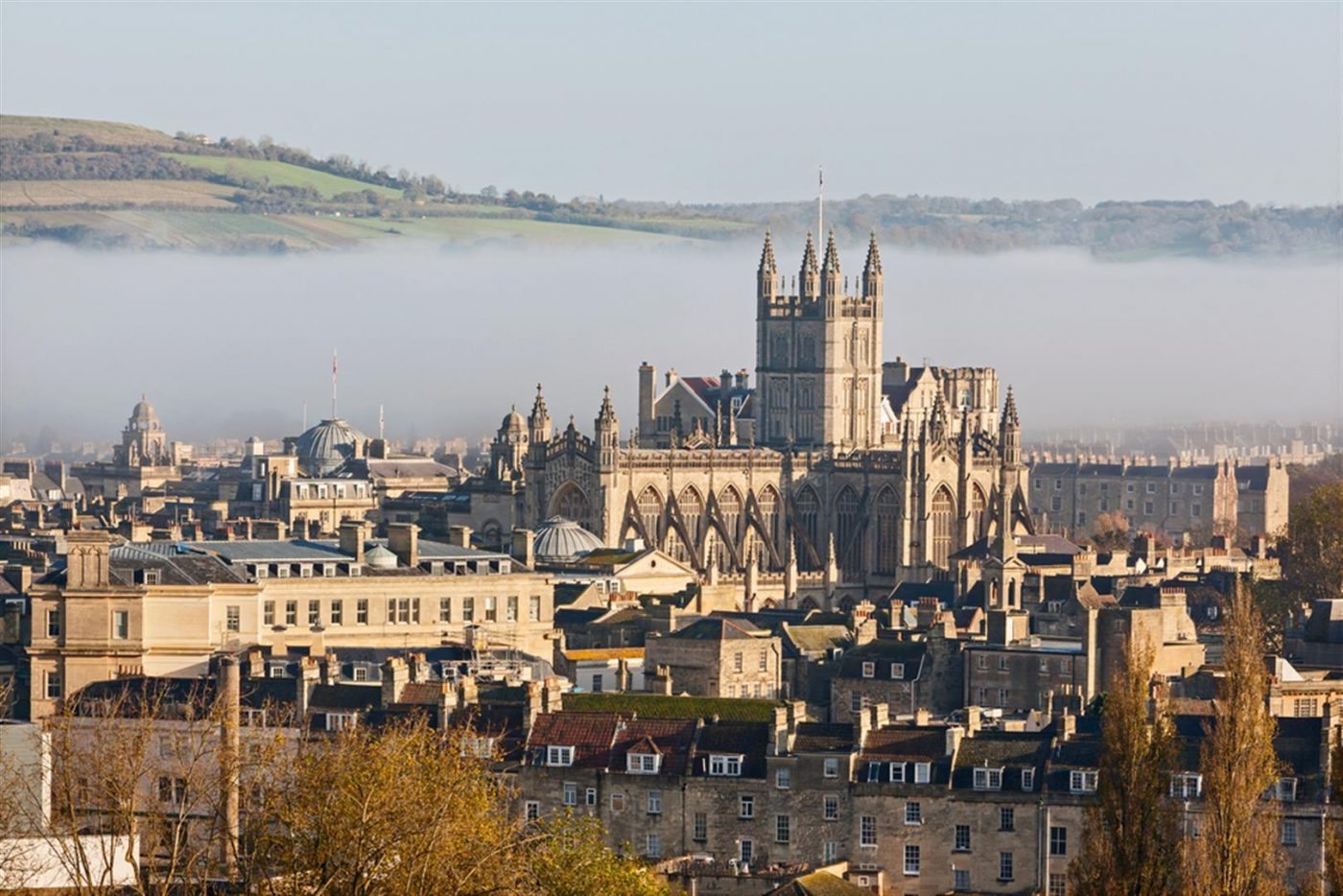
The Cotswolds | England’s Living History
They say you should never meet your heroes, as they’re destined to disappoint. A little harsh, I think, but I can understand the sentiment. And the same can be said for places. Sometimes the idea of a place, is better than reality.
Not so with the Cotswolds.
It is exactly, as you think it’s going to be.
It is quaint little villages, rolling hills, magnificent manor houses and babbling brooks.
Roman remains, ploughman’s lunches, verdant forests and ancient burial sites. Historic pubs, traditional ales and curious traditions, wildflowers galore and the resting place of a Queen.
Oh, and it’s also the birthplace of Winston Churchill.
You couldn’t get more ‘English’ if you tried.
So where can you find all this Englishness?
Located towards the South West of the country, near the Welsh border and the apex of the Bristol Channel, the Cotswolds extends for about 140kms north of Bath, stretching roughly 40kms wide, and enclosing just over 2,000 square kilometres.
It runs from South West to North East, and keeps the Cotswold Hills at the centre as it crosses through Gloucestershire, Oxfordshire, Wiltshire, Worcestershire and Warwickshire.
Second in size only to the Lake District, the Cotswolds was designated an Area of Outstanding Natural Beauty in 1966, which means it has almost the same level of protection as a National Park.
These AONBs were created in 1945 to protect areas that were too small to be National Parks, and lacked an abundance of wilderness, yet were naturally beautiful landscapes nonetheless.
And with 86% of the Cotswolds being covered by farmland, it fit the bill perfectly.
In fact, it’s the abundance of farmland, that’s left the Cotswolds as you see it today.

A picturesque result of boom and bust
Roll back 500 years and those rolling hills were packed with England’s great economic engine of the time – sheep. An enormous amount of money poured into the area. Wool merchants built extravagant homes and palaces. Villages and market towns arose, resplendent with the wealth of the nation.
The wool industry grew to such an extent that King Charles II dictated people should be buried with white tufts in their eyes. Such flagrant misuse of a valuable resource surely heralding its decline, and eventually they ‘pulled the wool over his eyes’, and the world moved on.
Serious looking men in top hats, like Isambard Kingdom Brunel, started building railway lines, bridges and the largest ship ever seen. The industrial revolution took over and the Cotswolds got left behind, leaving it like a living museum.
Which is how you’ll find it today.
The Cotswold Way National Trail
The best way to take it all in, is to walk the Cotswold Way National Trail, a route that’s
been established for hundreds of years by farmers, hunters and animals. Formalised in 2007, it now starts in the market town of Chipping Campden, and takes you 164kms south to the World Heritage Listed city of Bath.
So, like the travellers of old, we’ll follow the trail…
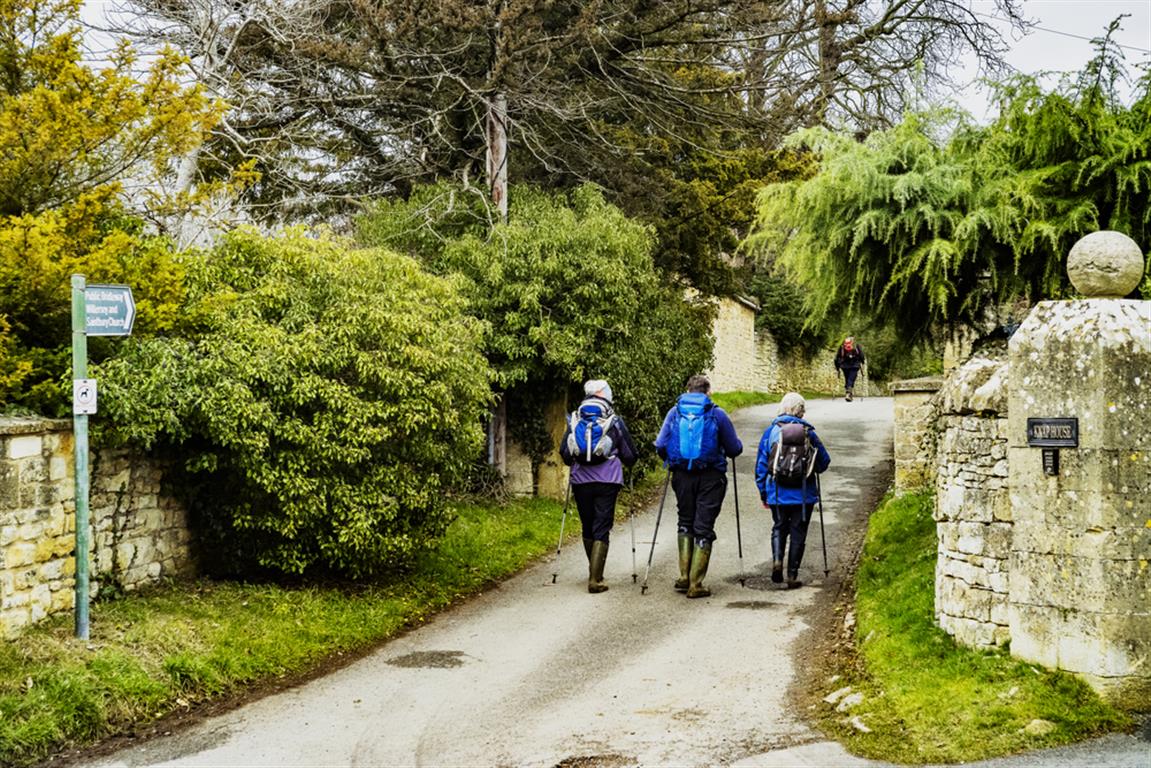
Chipping Campden
This sets the scene for most of the villages you’ll wander through. Medieval, Victorian and Tudor style buildings surround a 17th Century Market Hall, and there’s a Wool Exchange dating back to 1340. Lovely old pubs and tea rooms are to be found, with a mix of locals and tourists devouring pints of Legless Cow Best Bitter, or scones with jam and clotted cream.
If you’ve ever watched an episode of Midsomer Murders, then, that’s what it’s like.
Indeed, Midsomer Murders is filmed throughout Oxfordshire, so it’s entirely possible you’ve watched a Vicar steal a kiss from a farmer’s wife, in that very Market Hall.
When you start to walk, however, you’ll leave the cobbled streets and enter the surrounding woodlands, where, depending on the season you’ll find snowdrops, bluebells or poppies covering the ground.
There’s also, believe it or not, a wide variety of orchids in the Cotswolds, and a careful eye will be able to spot the greater butterfly orchid, bee orchid, early purple orchid, frog orchid, musk orchid, and even the rare green-winged orchid.
Before you head off on your walk, however, you should travel 19kms north to visit the birthplace of William Shakespeare. Even if you’re not particularly fond of the drama, comedy and tragedy of his plays, it’s impossible to underestimate the influence England’s bard had on the world.
In addition to 37 plays, 312 sonnets and 5 long poems, Shakespeare has been credited with creating no less than 1,700 new words for the English language. So before you decide to give it a miss, consider this.
If you’ve ever been on a wild goose chase, and, as luck would have it, found a cold-blooded manager courting a fashionable arch-villain upstairs in the bedroom, then you’ll probably realise love is blind, you’ll put that green-eyed monster aside and accept he has a heart of gold, despite his barefaced lies. You’ll understand he’s seen better days, and because you’ve got to be cruel to be kind, you’ll say good riddance, forever and a day.
Yes if you’ve ever found yourself in that position dear reader, goodness forbid, you have Shakespeare to thank for almost every single word.
Now, onto the trail.
Fields of lavender give way to crops and grazing pastures as you leave Chipping Campden, and you’ll find yourself swatting bumblebees as you ascend Dovers Hill. Before long you’ll pass the remains of an ancient Roman Vineyard, abandoned, possibly, because English wine is hardly the toast of the town.
Wild meadows and deciduous woodlands surround your continuing climb, until you can finally see Broadway Tower – a folly that’s thought to have inspired JRR Tolkien’s ‘Amon Hen’ in Lord of the Rings.
In fact a number of locations around here are said to be featured in Tolkien’s classic novel. Moreton, only 12kms away, is said to be the village of Bree, and The Bell Inn on main street, supposedly ‘The Prancing Pony’ where Bilbo meets the lost king Aragorn.
You’ll discover visits to the pub are frequent, and often in any trip to the Cotswolds, and while we’re not detracting from the current clientele of The Bell Inn, chances are they might not be descended from royalty.
Although, Princess Anne lives in the Cotswolds, as does her daughter Zara Phillips, so you never know who you might bump into as you order a pint of Bishops Finger, and tuck into your pork crackling.
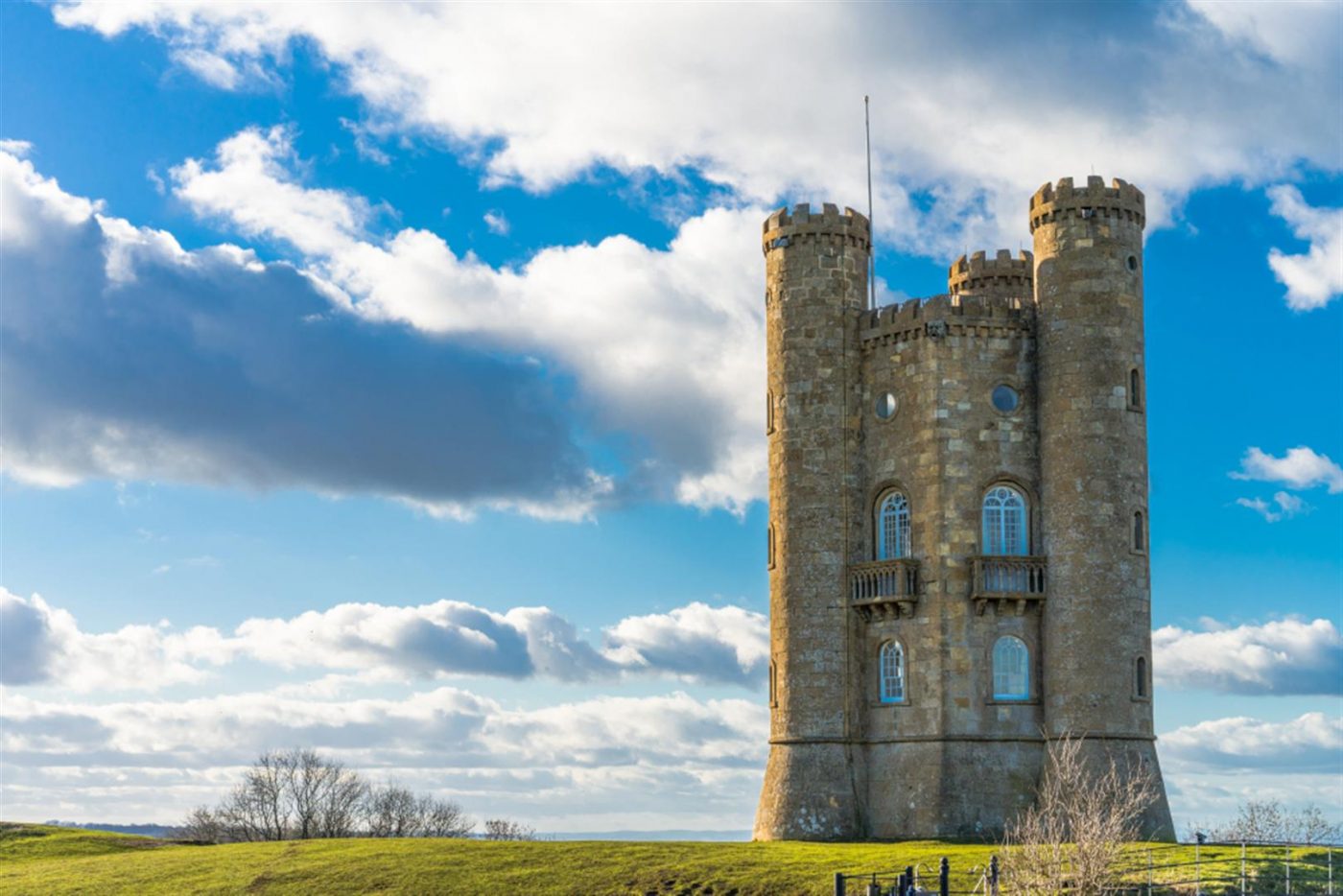
Next Stop, Stanton
The word ‘quaint’ wasn’t created by Shakespeare, but you can imagine that it could have been after he visited Stanton. In a place known for its beautiful villages, Stanton is recognised as being the prettiest in the whole region.
There’s not much to do when you get here, except stroll around and soak it all in, make your way down the main street, savour the views across the Vale of Evesham to the Malvern Hills and the mountains of Wales in the distance, and then, of course – stop into The Mount Pub. Try a pint of Golden Fleece this time, and fill your belly with a hearty meal of Gloucester Old Spot sausages and mash. Gravy, of course, mushy peas, optional.
After some Cacklebean Eggs the following morning, go for a quick visit to St Michael’s church. Sitting on the intersection of two ley lines, it’s believed to be built on an ancient pagan site. See if you can find the heathen symbols on the stonework inside.
The church as it stands today has been there for 500 years, and the list of rectors inside dates all the way back to 1269. Have a seat, take a pew. Feel the grooves in the woodwork in front of you, worn away by hundreds of years of sheepdog leases biting into the furniture.
Now, time to go.
Cleeve Hill
There’s nothing too strenuous to climb in the Cotswolds, however if anything was to test you, it would be the walk up to the top of Cleeve Hill – the highest point in the region at 1,083 feet. The views are rewarding though, and you can see well over the River Severn into Wales, across an undulating green carpet dotted with little white specs, and flourishes of yellow and purple.
Cleeve Hill itself is an outcrop on the edge of the Cotswolds Hills escarpment, formed by about 150 million years ago under the warm Jurassic seas. The resulting sedimentary rock is known as oolitic limestone, and it’s the golden hue of this stone that colours almost every building in the Cotswolds. A distinctive feature that’s as ubiquitous, now, as white range rovers and minor celebrities.
It’s this bedrock of limestone that’s allowed the wonderful grasslands to grow, which is why it’s perfect for grazing sheep. And in the sheltered valleys throughout, that same soil has given life to thick forests of beechwoods, but ash, oak, elm, field maple, and whitebeam.
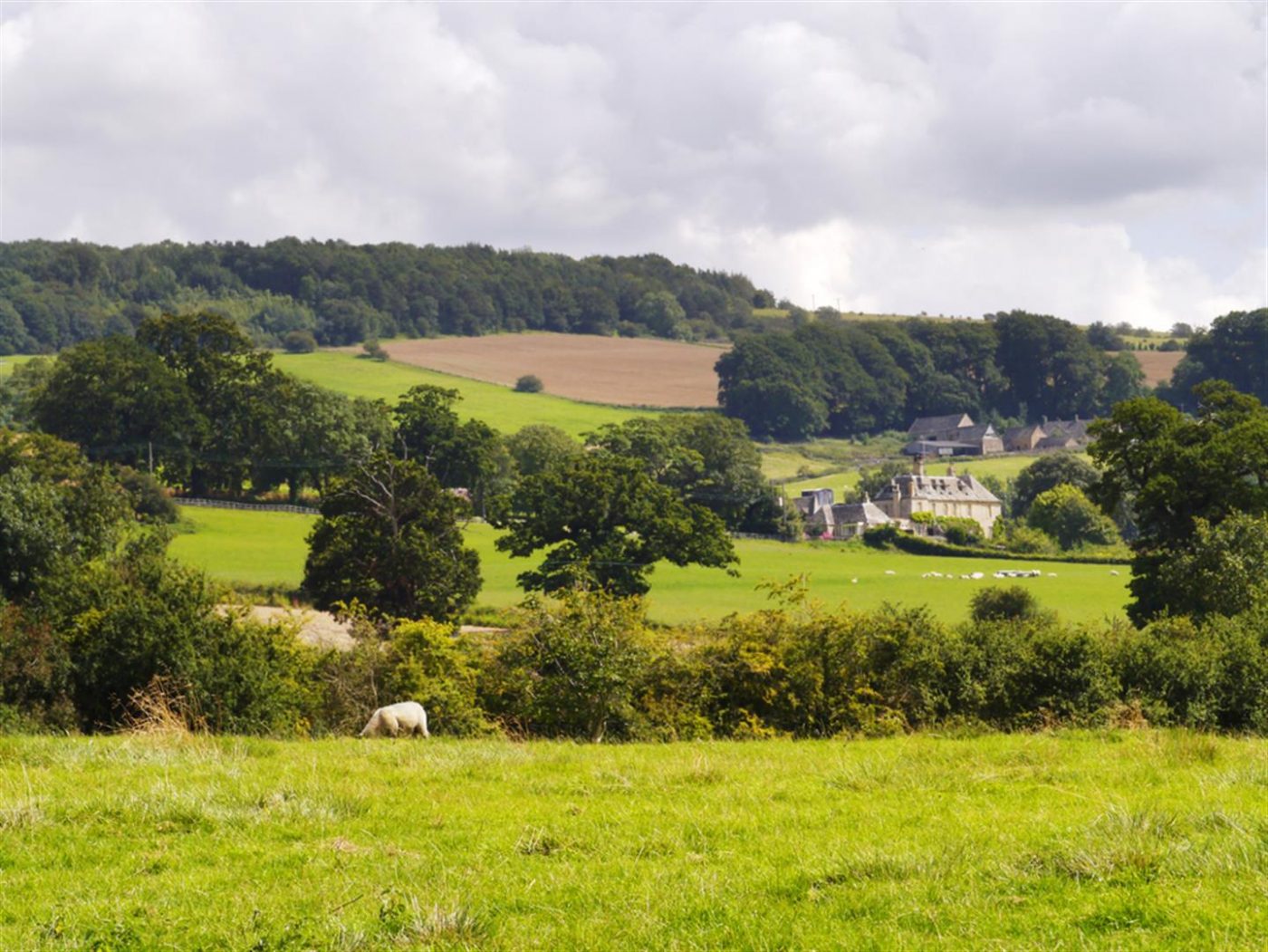
Sudeley Castle
On the way to Cleeve Hill, however, you’ll pass Sudeley Castle. A fortified manor house that’s played its part in many a chapter of England’s history – and is the only private castle in England to have a Queen buried in the grounds.
You might think being born into an aristocratic family, as a descendant of King Edward III, would be a good start in life – and you’d probably be right. Yet Catherine Parr went on to marry Henry VIII – and that’s an occupation that didn’t end well for many, particularly the two wives he beheaded.
Queen Catherine managed to avoid the famous monarch’s infamous wrath however, and went on to outlive him by a year. She’s now buried at St Mary’s chapel in the grounds of the castle.
Over the years it’s hosted kings and queens for a glutinous three day feast to celebrate the defeat of the Spanish Armada, acted as a refuge for King Charles I during the English Civil war, and it’s passed between private ownership and the crown a number of times, before finally falling into disrepair in the 1600s.
Two hundred years later it was bought, and completely restored by a couple of brothers who ran a glove-making business. Who would have known there was that amount of money in gloves. Anyway, it was handed down over the generations, and although it’s still an active residence – you’re allowed to visit the Queen as you pass. Well worth the detour.
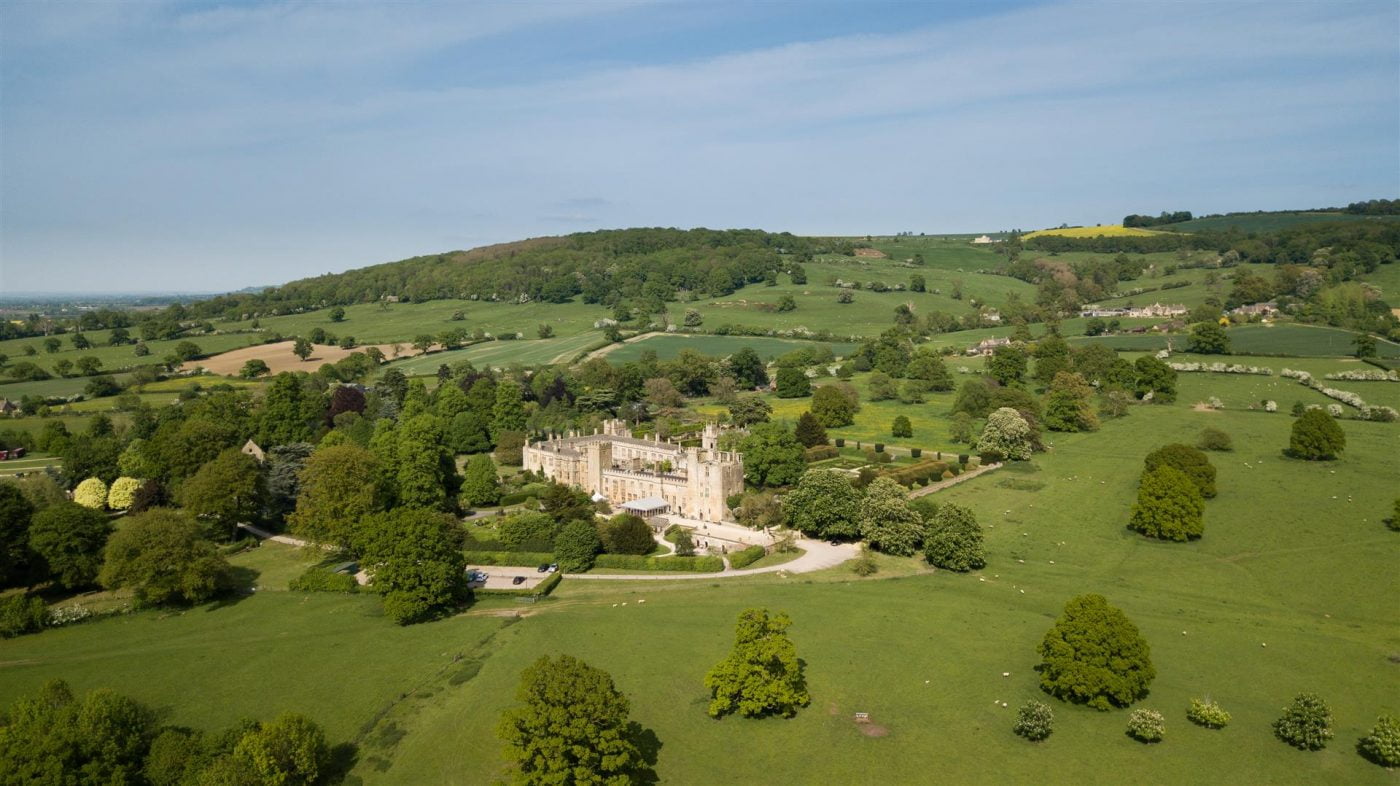
Birdlip
The track now takes you past the Devil’s Chimney, through the ancient forests of Crickley Hill and on to another tiny little village that time forgot – Birdlip. And no, these aren’t names from the Lord of the Rings.
Time for lunch, perhaps a pint of Demi-God this time – a superlative draught for sure, and then it’s off to the Iron Age burial mound at Barrow Wake, where some of the most important pre-roman metalwork items in the whole of Britain have been uncovered.
Birdlip is also very close to a place called Cooper’s Hill, which you’ve either heard of because it’s a beautiful nature reserve, or, because of the famous cheese rolling competition where exuberant, flexible youths throw themselves down a very steep hill chasing a large round of Gloucester cheese.
Held every year since the 1800s, the spectacle was finally cancelled in 2010 due to the growing number of injuries – although it’s rumoured to be starting up again in 2020.
Cheese rolling isn’t the only unusual past time to be found in the Cotswolds though, and it certainly isn’t the oldest either. Morris dancing has been going on, in some form or another since the 16th Century, and back in Chipping Campden, every year since 1612, the eccentric Robert Dover’s Cotswold Olimpicks have been delighting audiences and participants alike, with a range of events such as welly-wanging, wrestling, shin kicking and tugs of war.
A character for his time, Robert Dover paraded round the event in horseback every year sporting a jaunty hat, a flouncy feather, and a ruff that belonged to the king. Even to this day someone takes his place and prances around in the same outfit, strutting like an eccentric, joyful monarch who’s thrown care to the wind. And although it’s doubtful, we’d like to think it’s the same ruff he’s wearing.
We could go on, but I suspect you’ve probably had enough by now.
We haven’t even touched on Blenheim Palace, for example, a residence that puts Downton Abbey to shame, birthplace of Winston Churchill, and was recently in the news because it was robbed of a solid golden toilet that was on temporary display!
And Bath. The only UNESCO World Heritage-listed city in the UK, home to the historic Roman Baths and Britain’s finest Georgian city.
There really is so much to talk about here in the Cotswolds. It’s the land that time forgot, and the more you delve, the more you find.
And the good thing is – every time you come up for air there’s a splendid pub, a hearty meal, and a glorious pint to be downed, before resting your weary head for the night.
Not a bad way to spend a couple of weeks of your life, or indeed, the rest of it.
To book a Cotswolds walk or hike package, book now online or call us on (03) 9597 9767.



Sandra Church
Please send me dates and approximate pricing for 2020/21 and the best time of year to walk. Many thanks.
sanyana
Hi Sandra,
With all of our self guided walks we allow you to choose your preferred starting date. The season for the Cotswolds runs from March to October. Up to the end of May you could encounter a few showers however the meadows and village gardens will be in full bloom. The summer months from June through to August offer more daylight hours making it the perfect time for enjoying hillside picnics and sampling local beer in the pub gardens well into the evening. Often summer days can stretch into September when the fields are busy with harvest preparations. Whichever time of year you choose, you should always be prepared for a change of season during the day!
Pricing for 2020 / 2021 are as follows:
Cotswolds Villages, Trails and Stratford-Upon-Avon – 7 days – $1,250 per person based on twin / double share
Cotswold Way – 9 days – $1,495 per person based on twin / double share
Cotswold Way Uncovered – 11 days – $1,895 per person based on twin / double share
I will also send you an email to see if I can offer any further information.
Sanyana Pethes
Christine Raff
I am very interested in the Cotswold walk. Could you please send more information about it. when would the walk be etc. many thanks Christine
sanyana
Hi Christine,
Thank you for your comment.
We are now taking bookings for our 2020 season commencing in April 2020 running until early October 2020.
We offer 3 itineraries for the Cotswolds ranging from 7 – 11 days you can view these here. Each of our walks are self guided which means you choose your preferred starting date and we check availability with the accommodations.
I have sent an email to you from Sanyana@auswalk.com.au we can go from there.
Sanyana Pethes